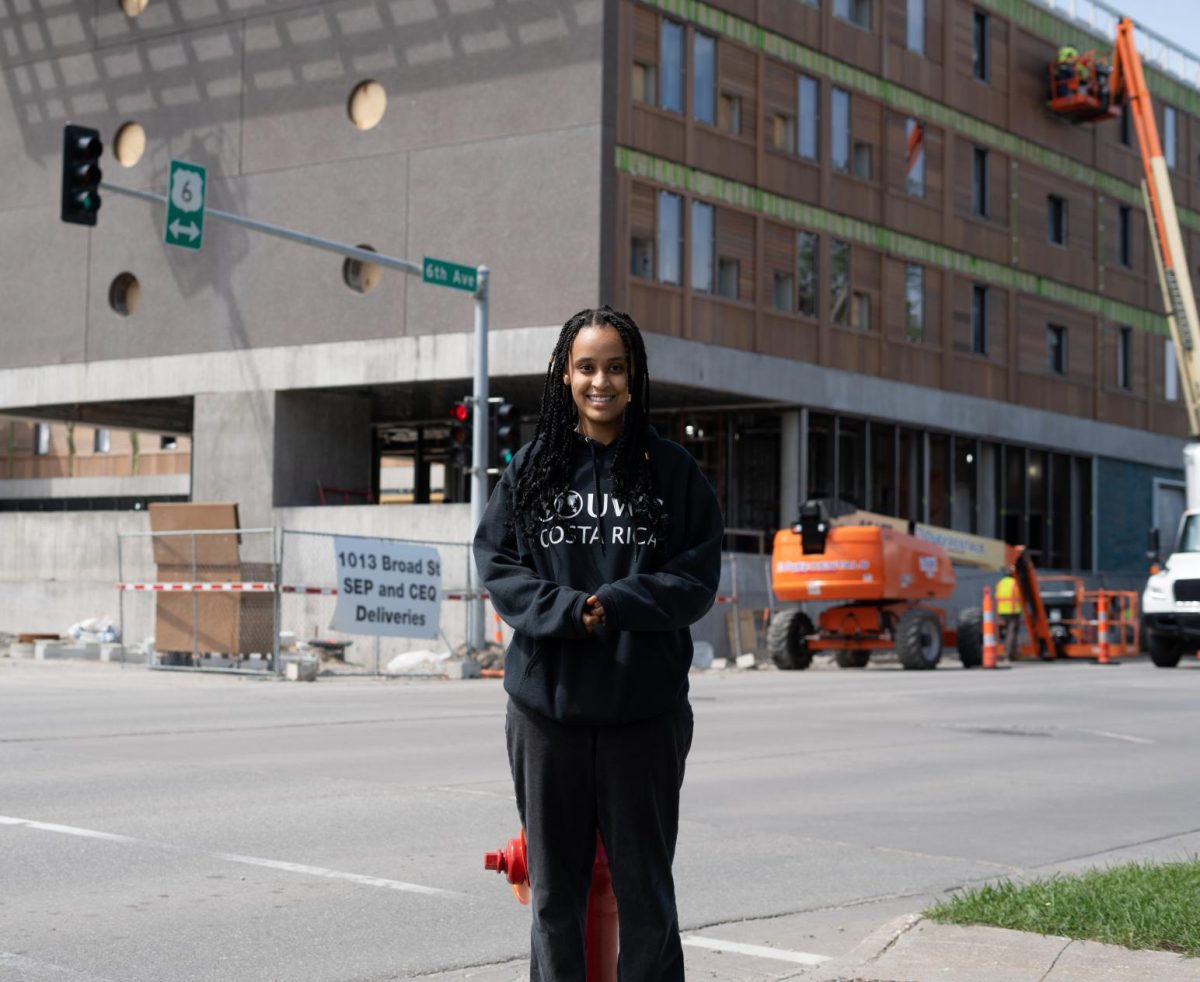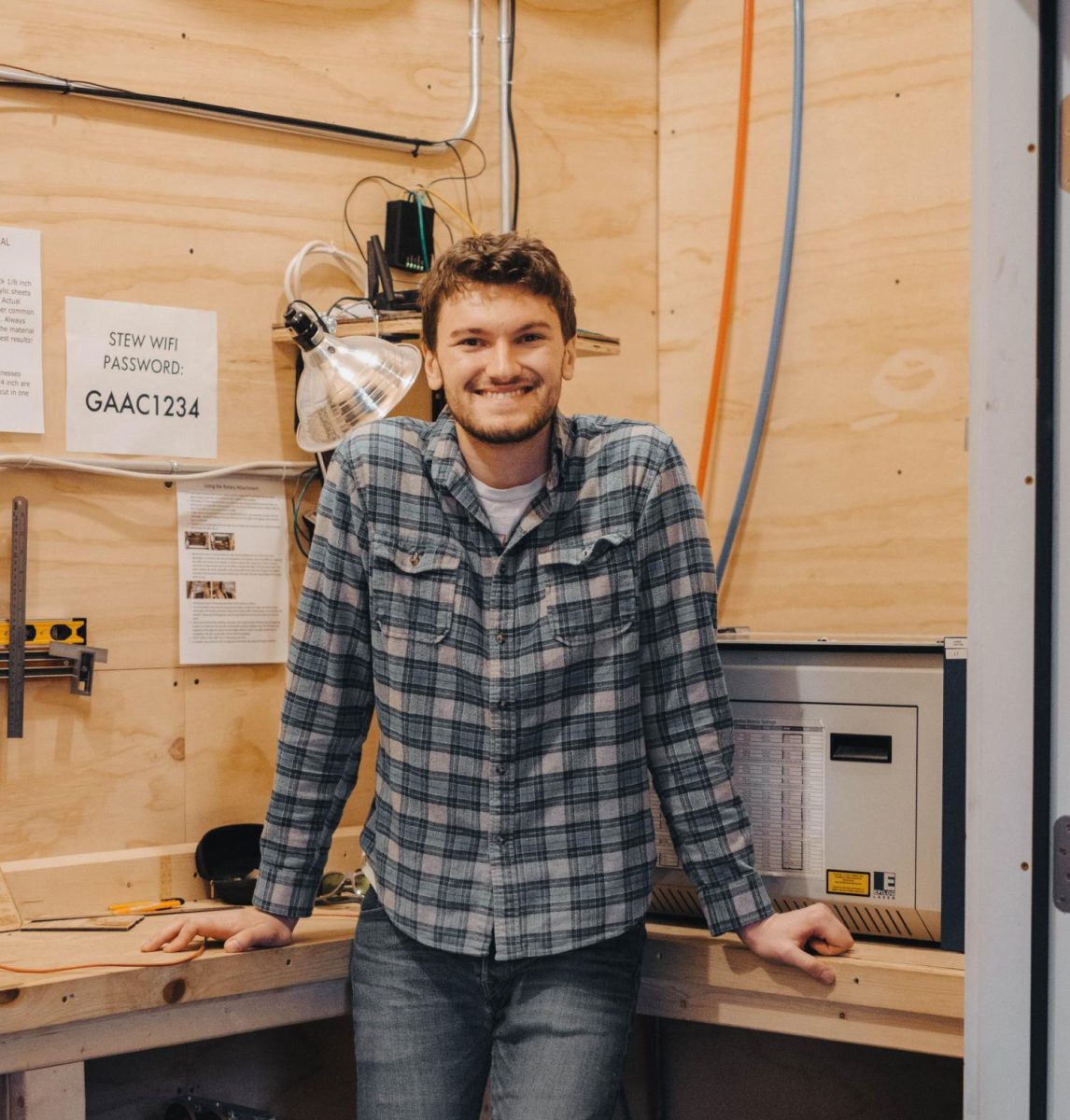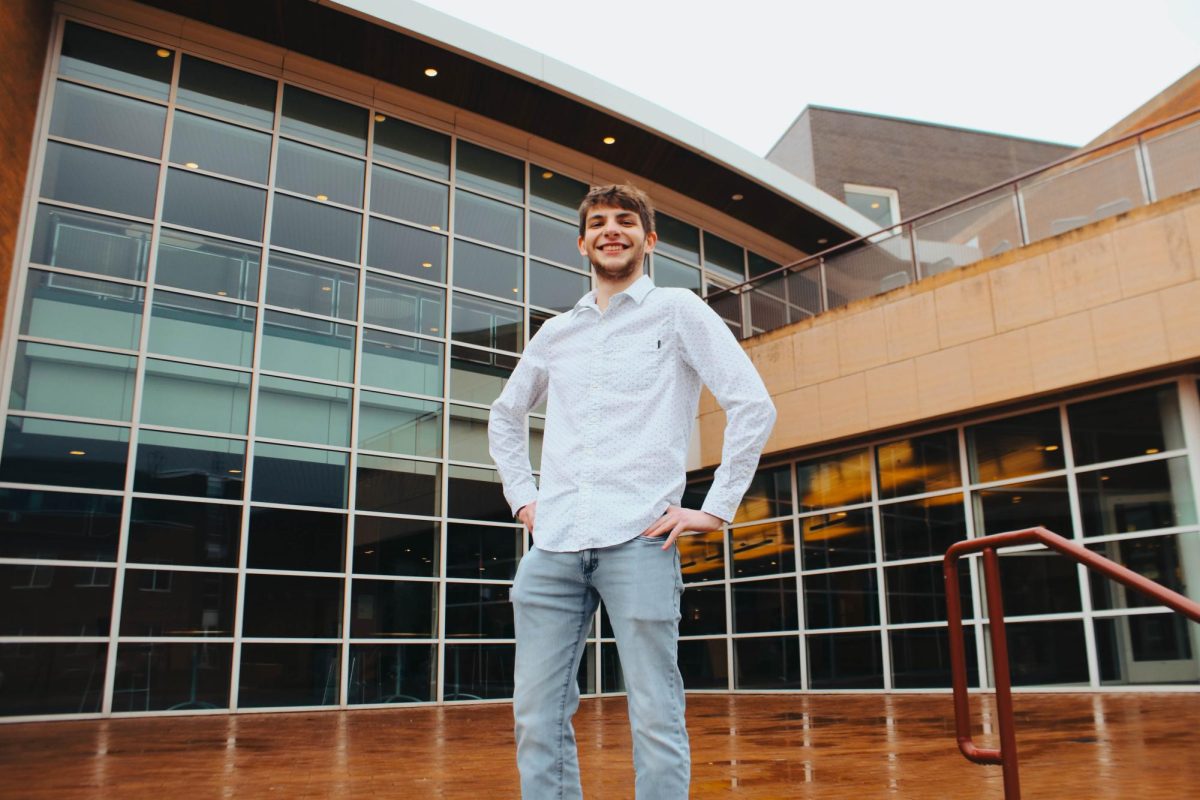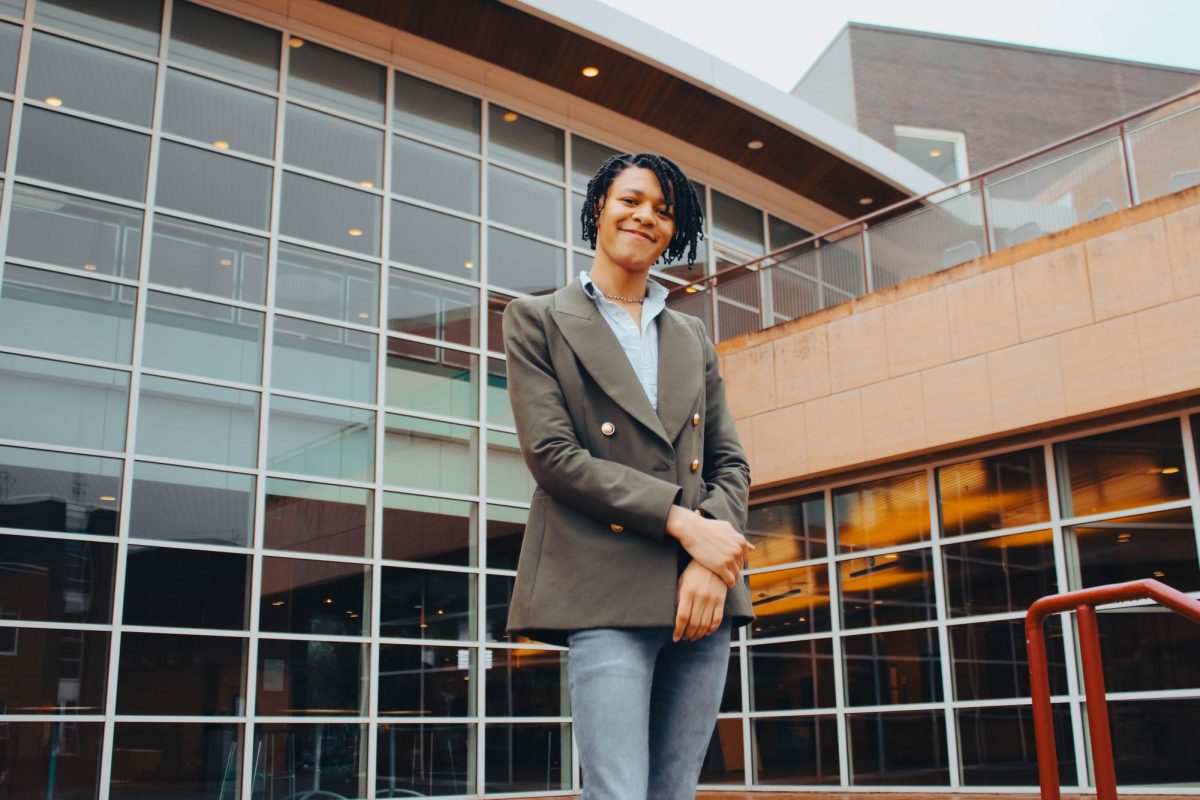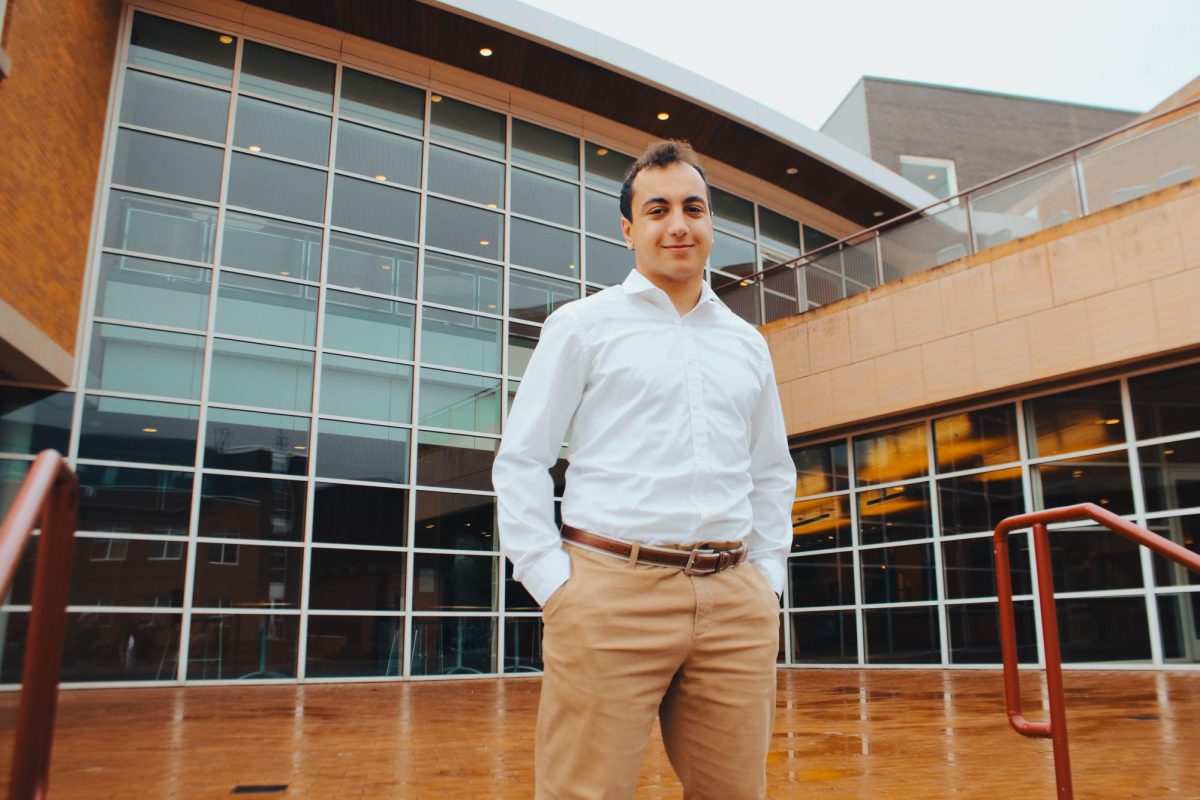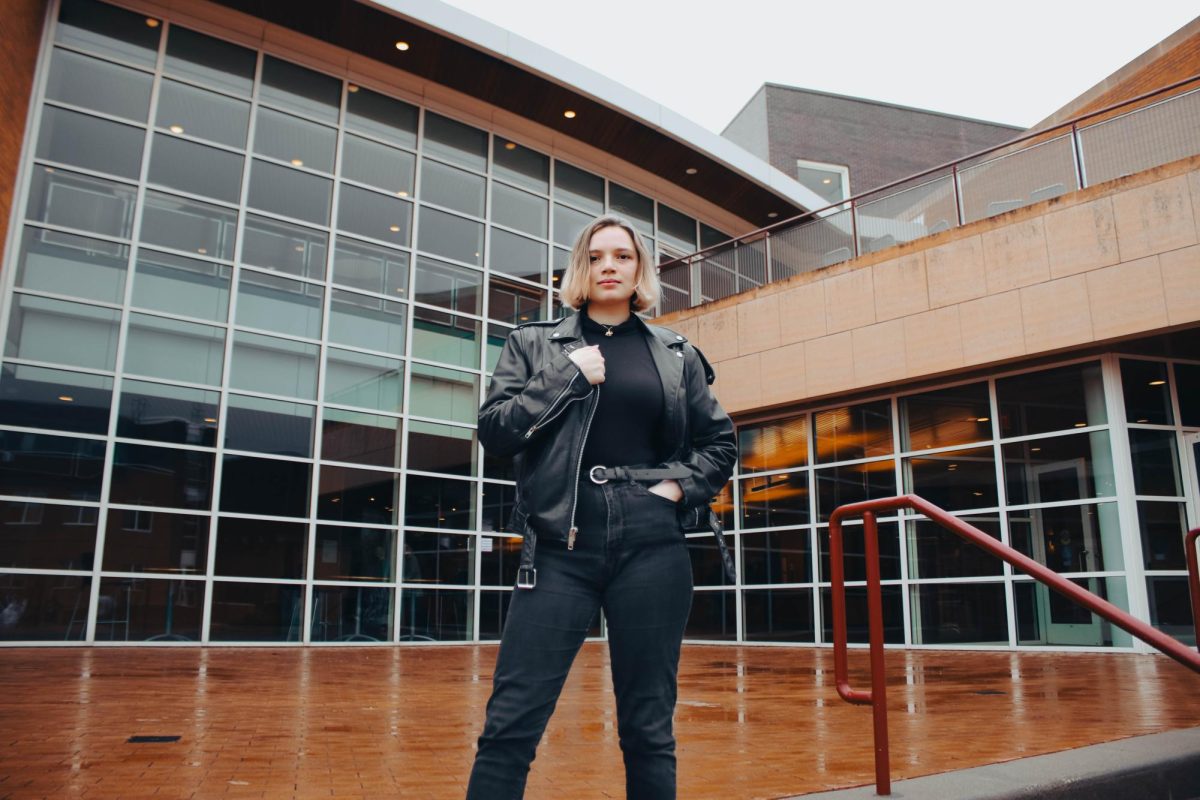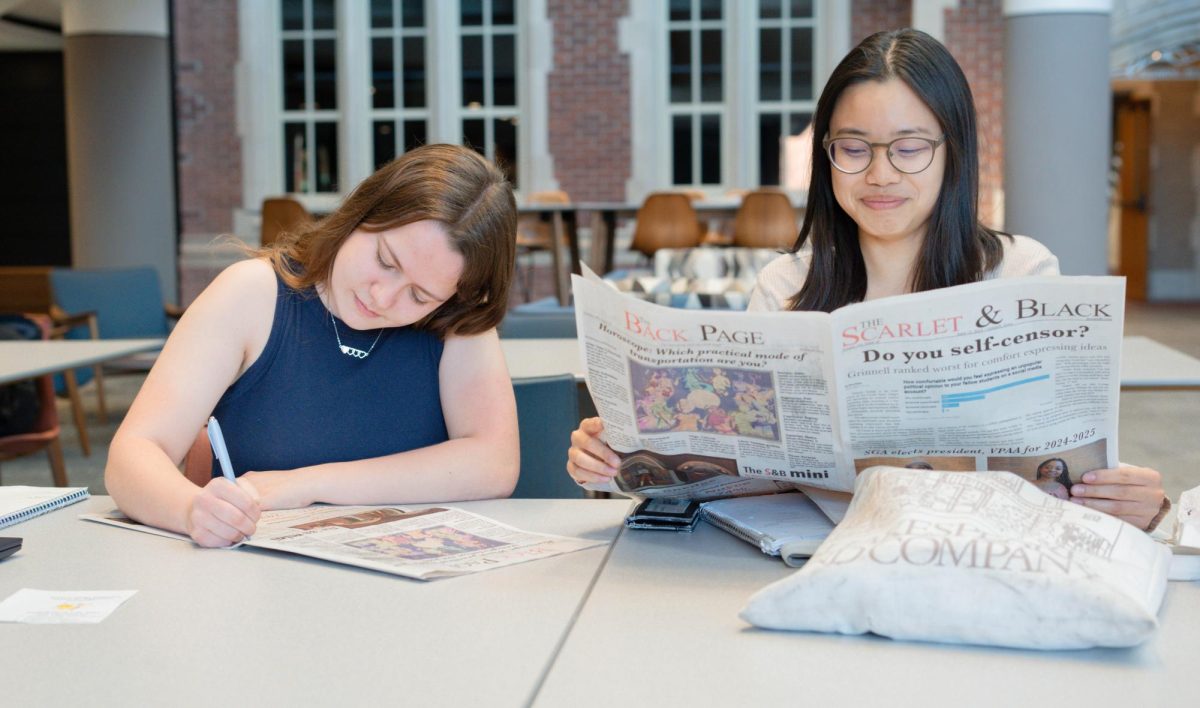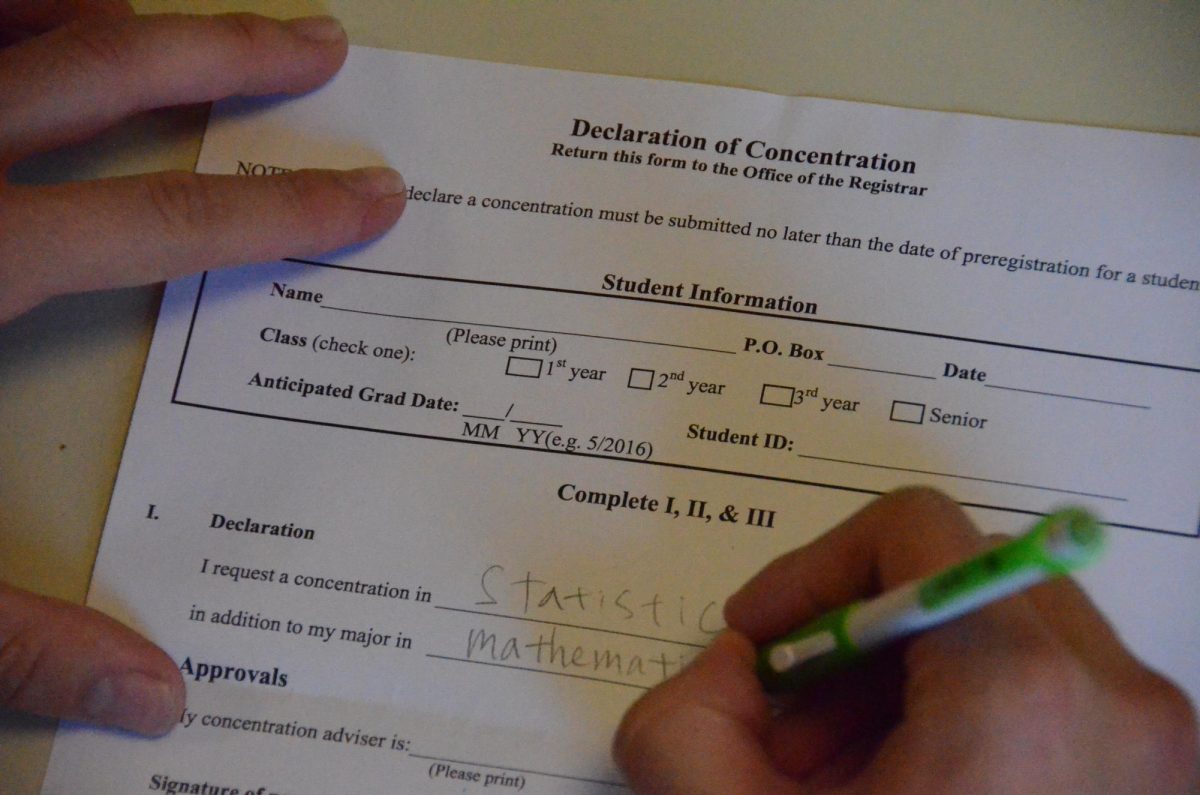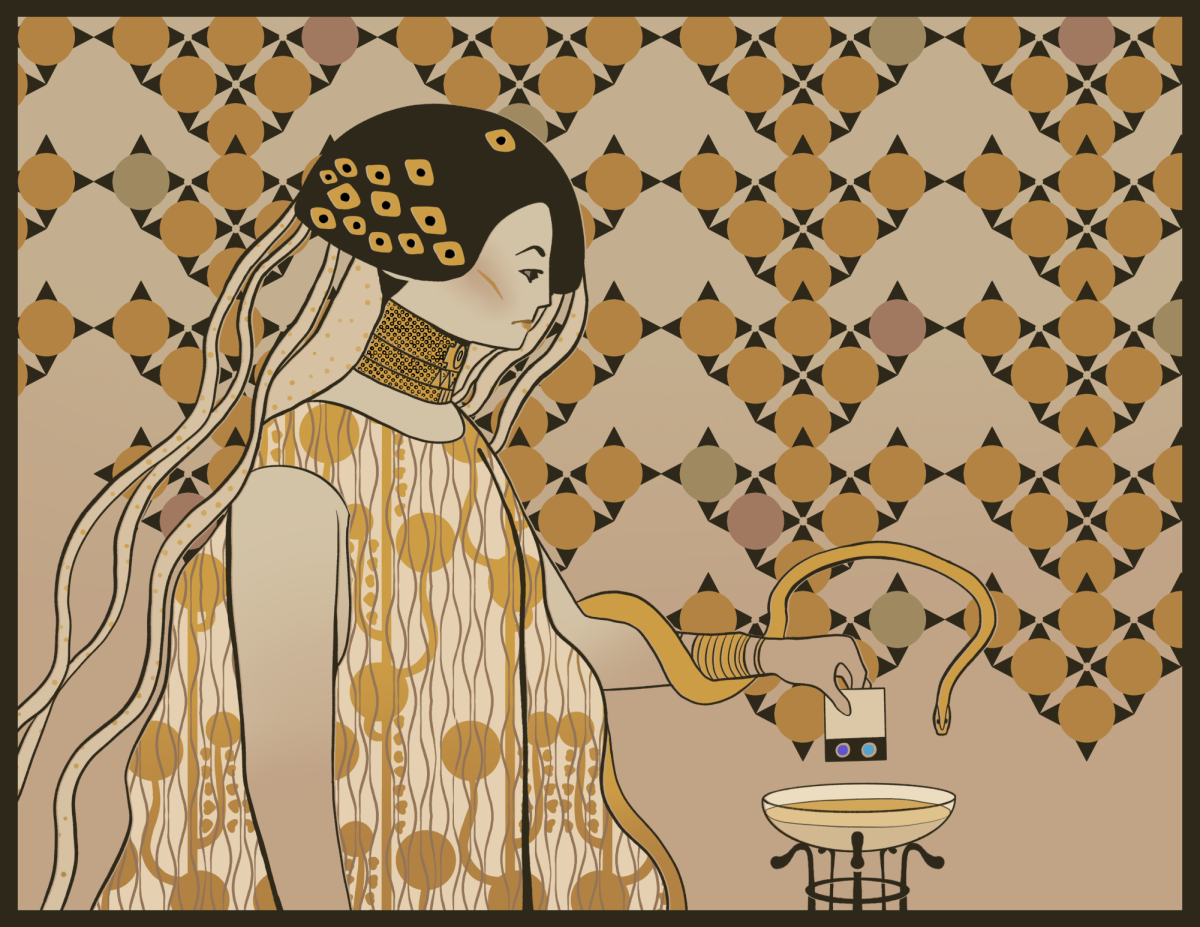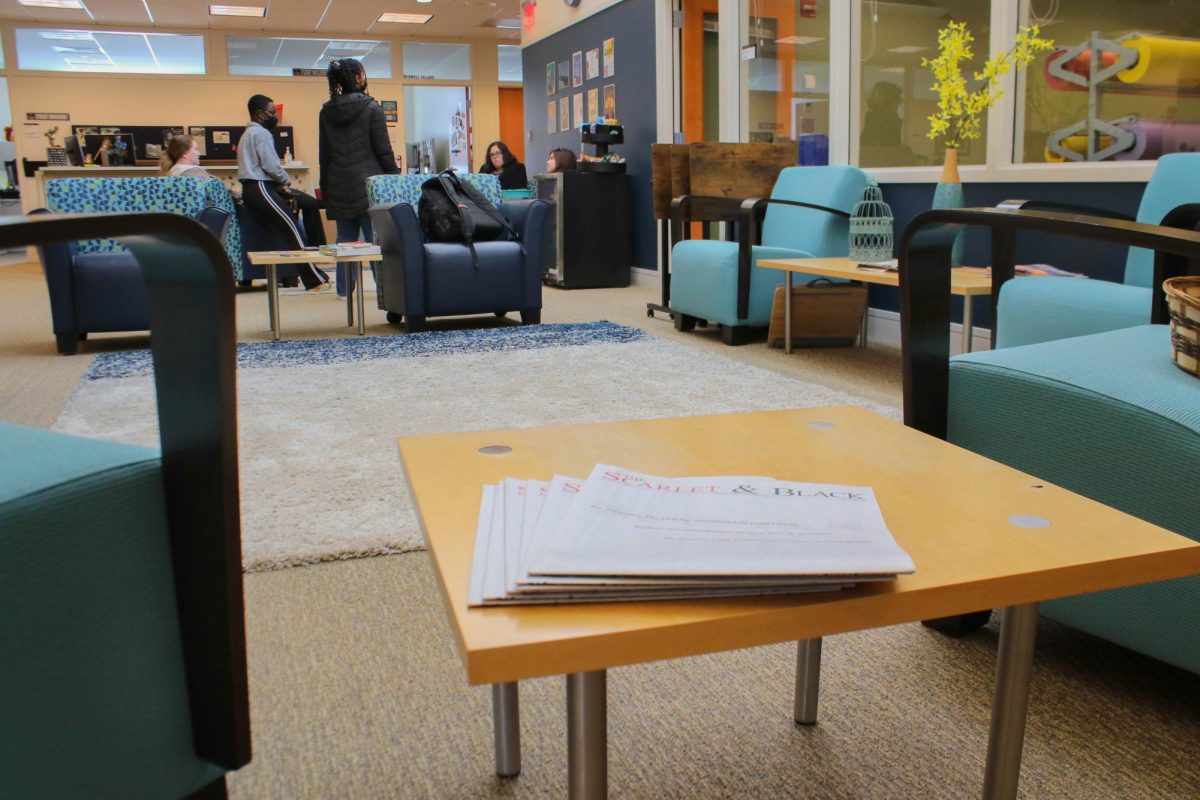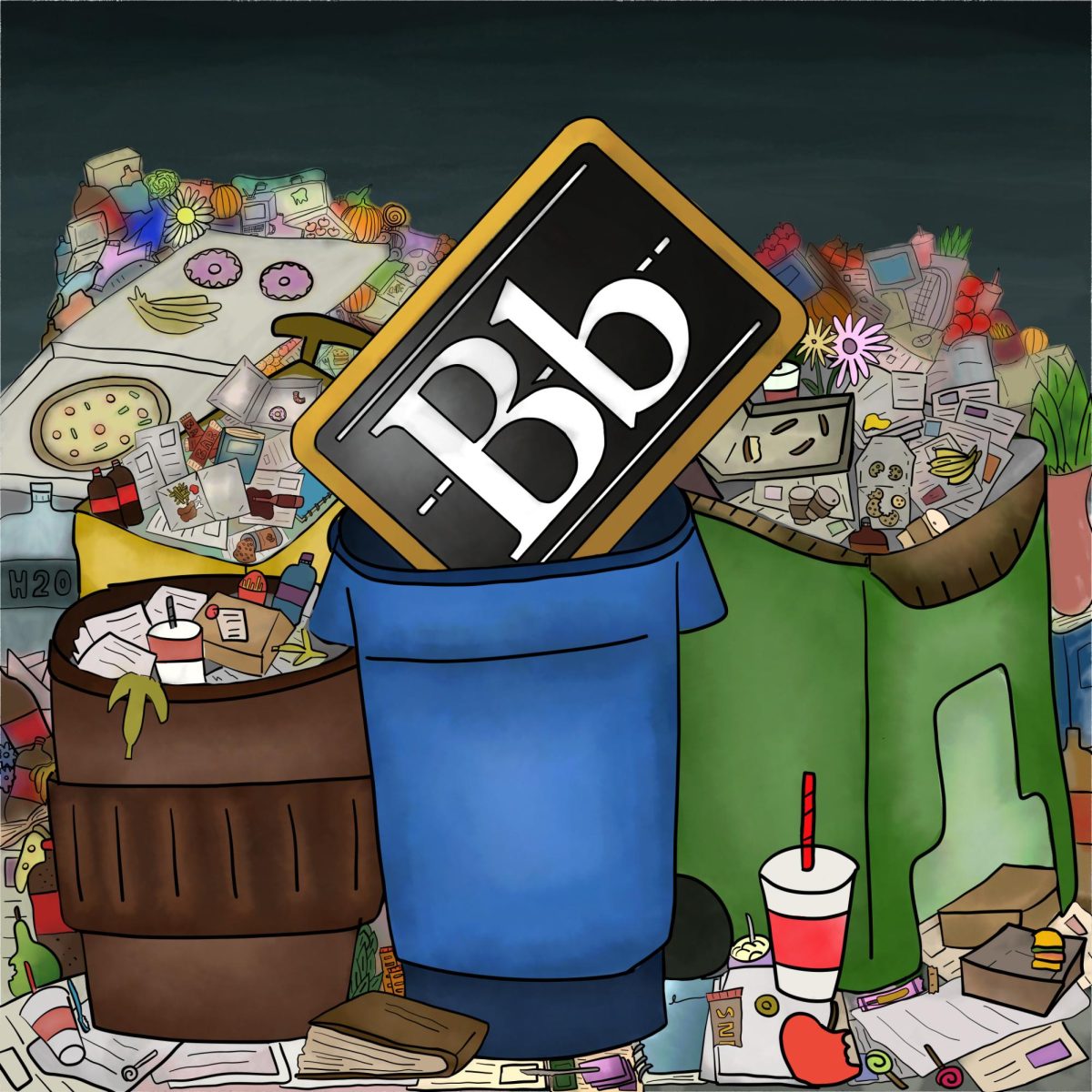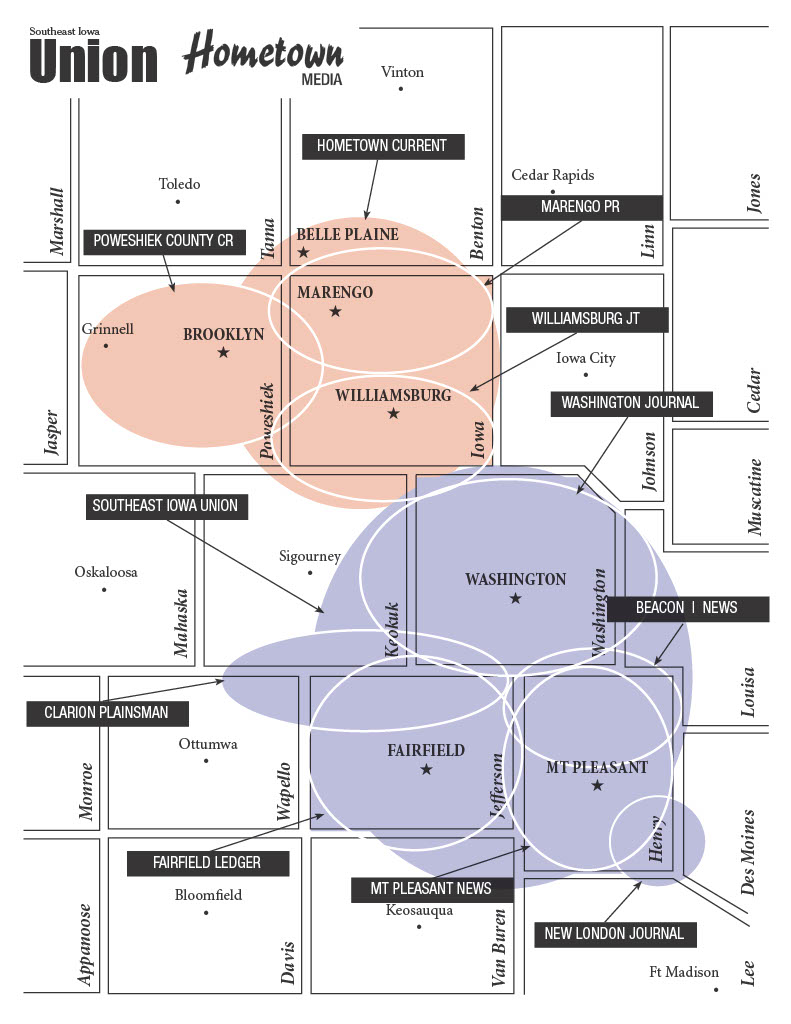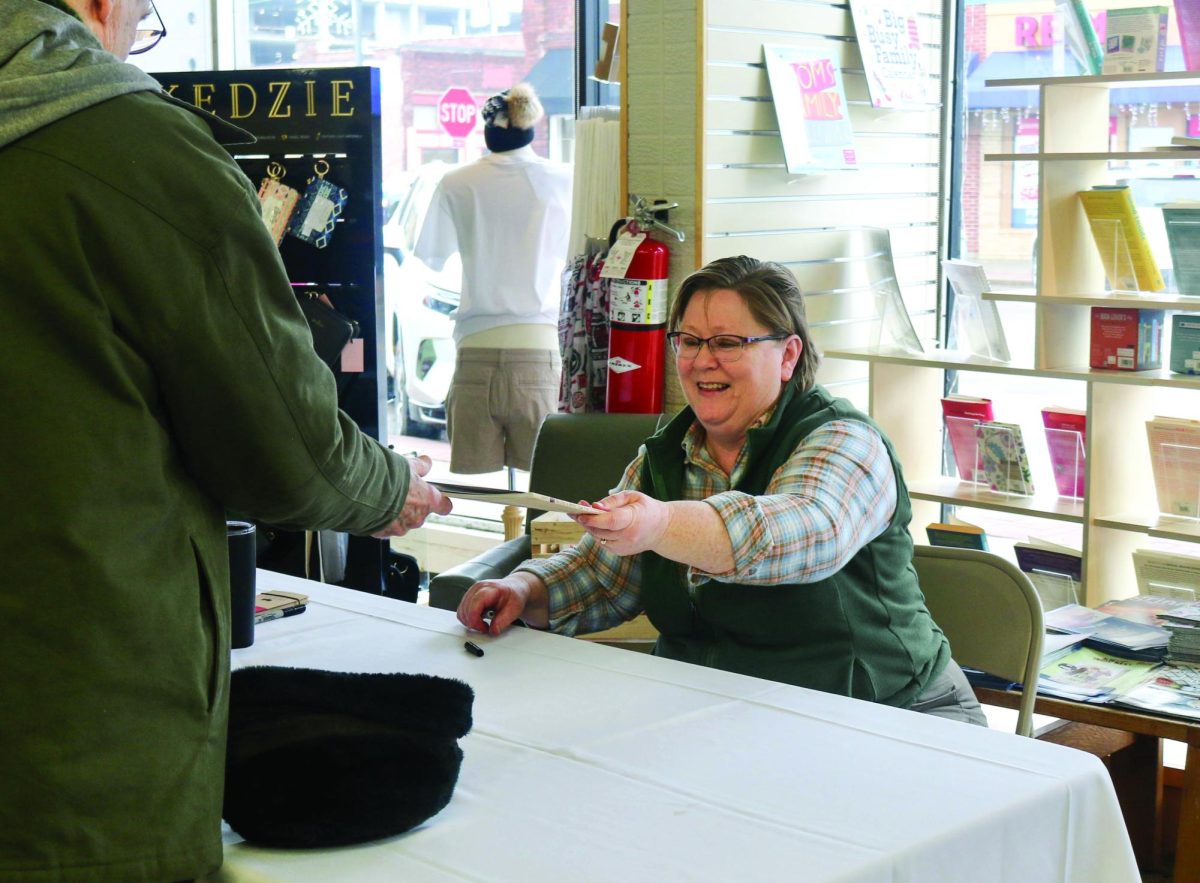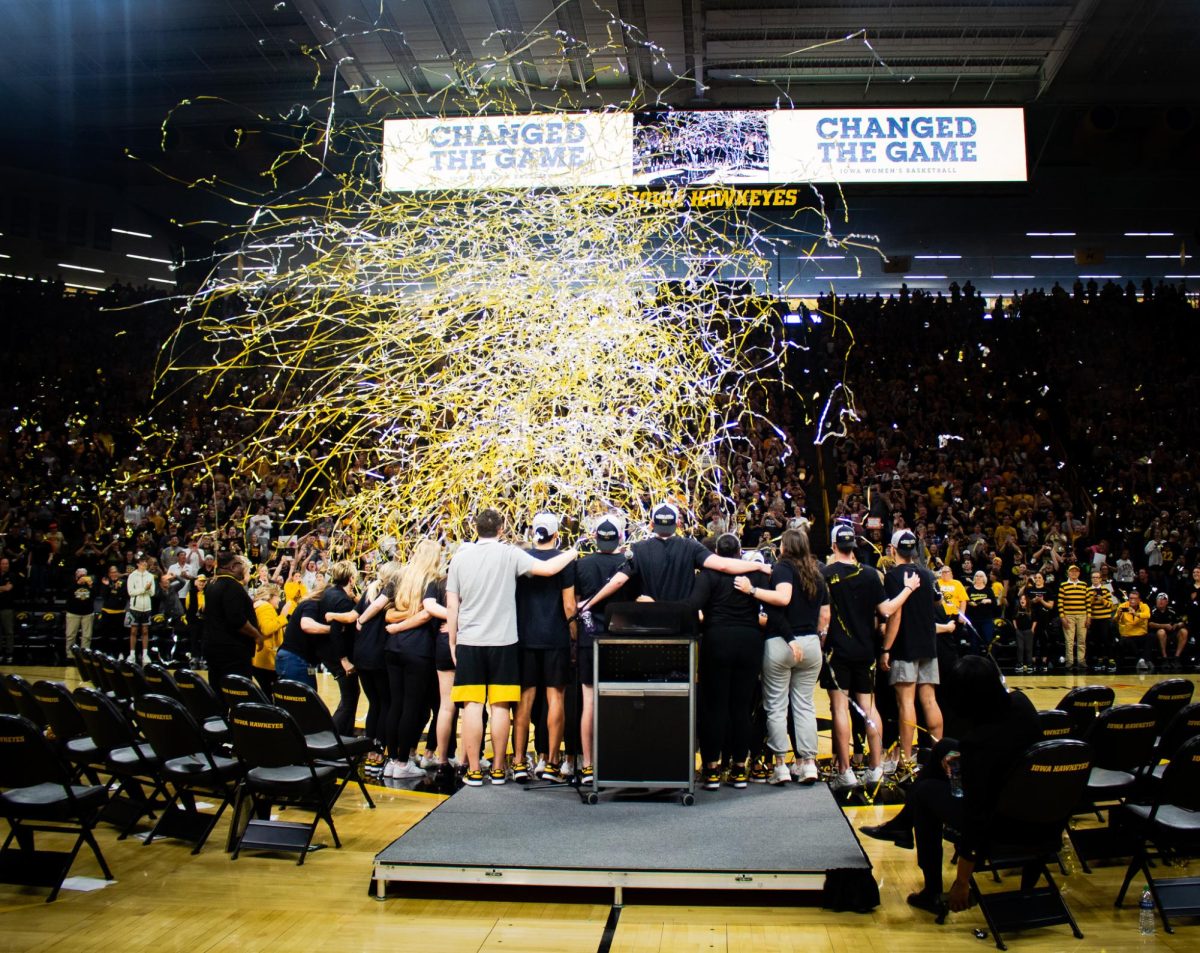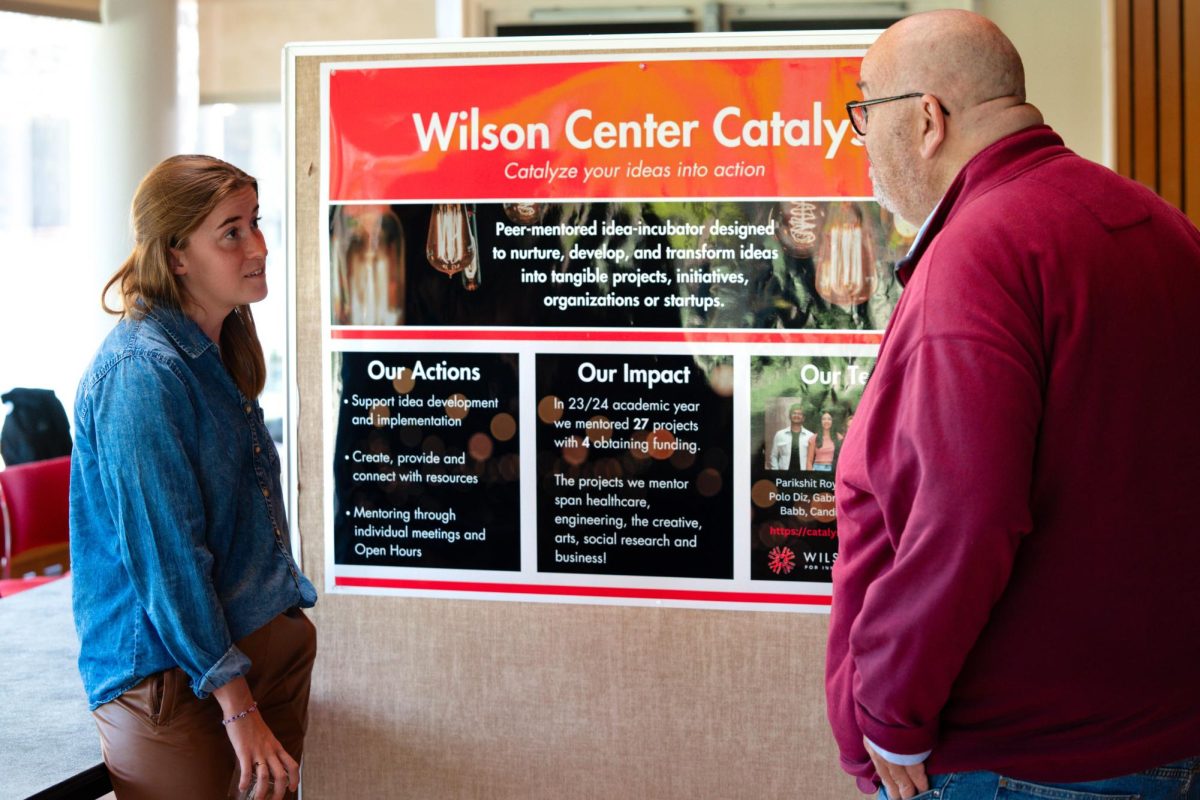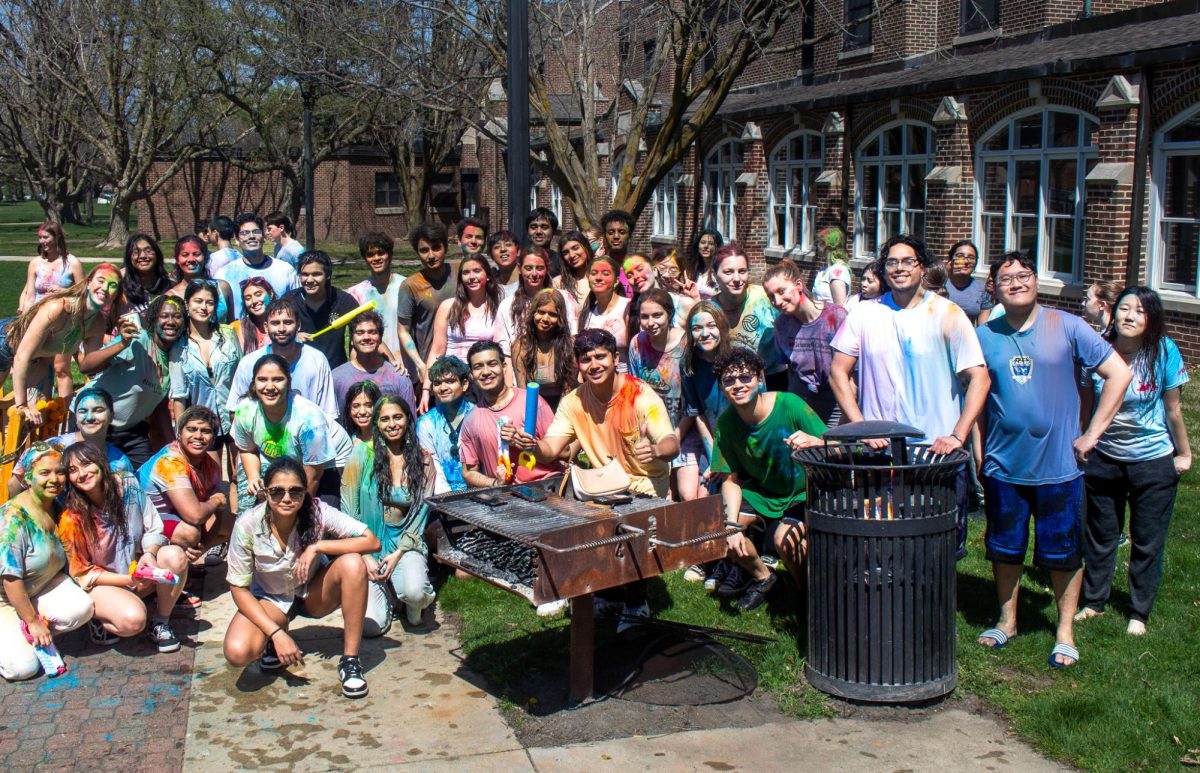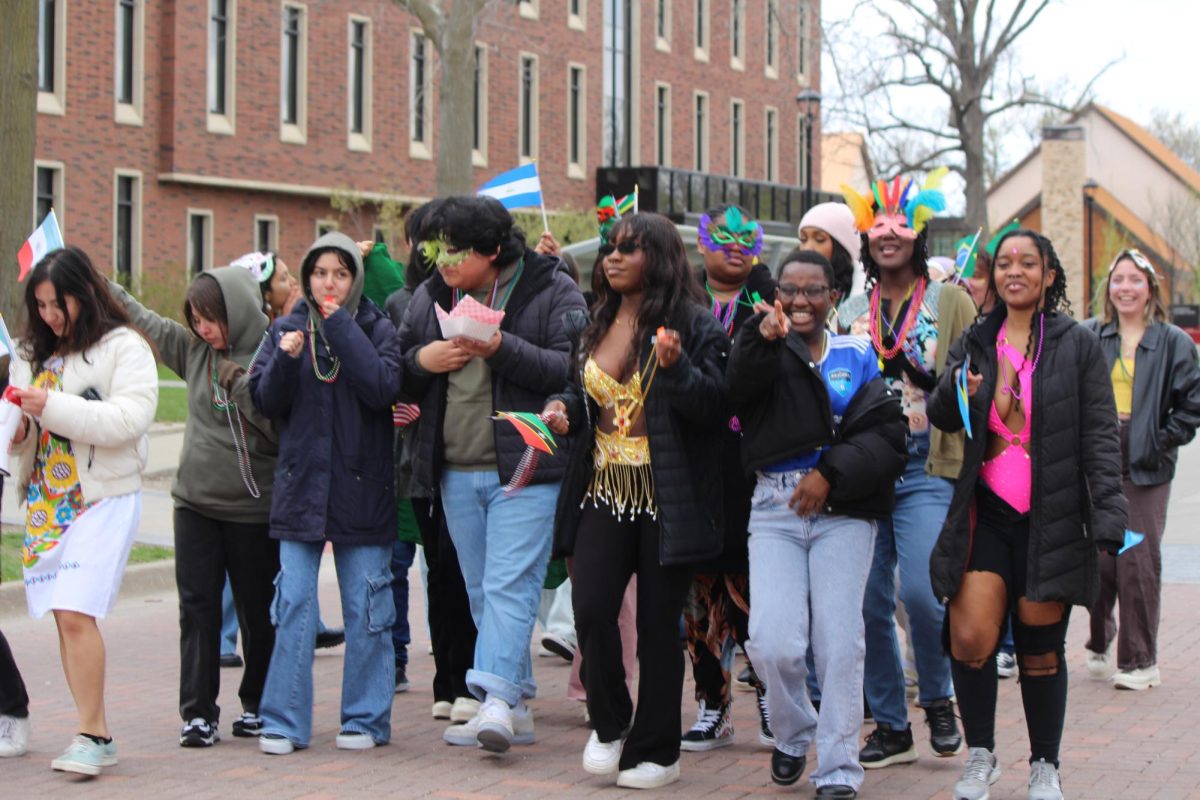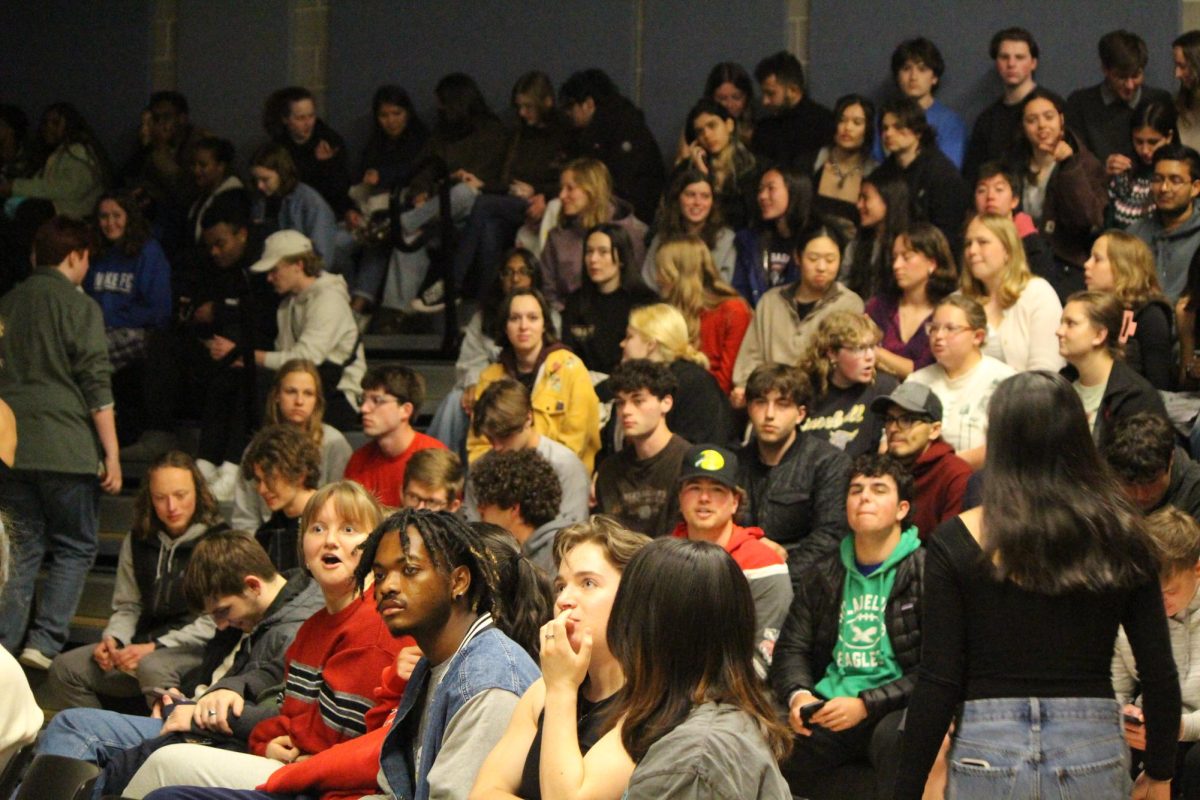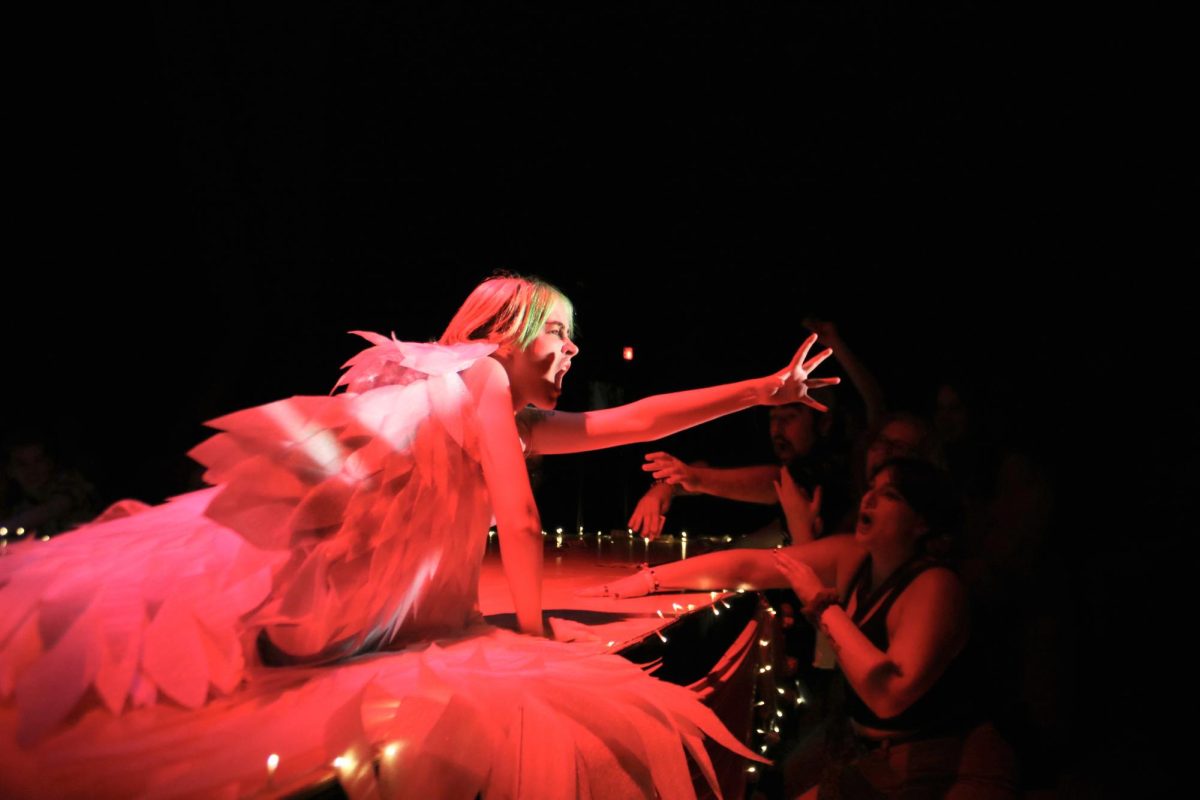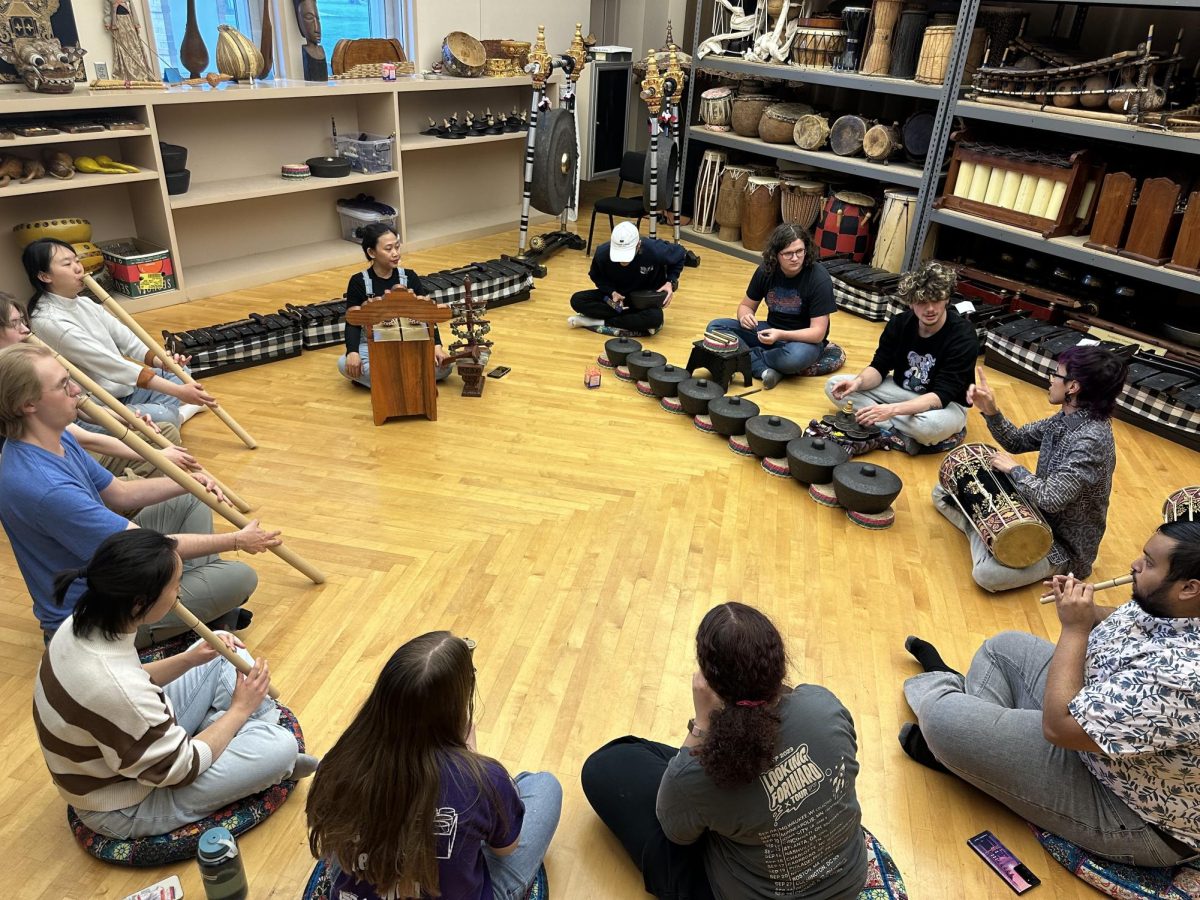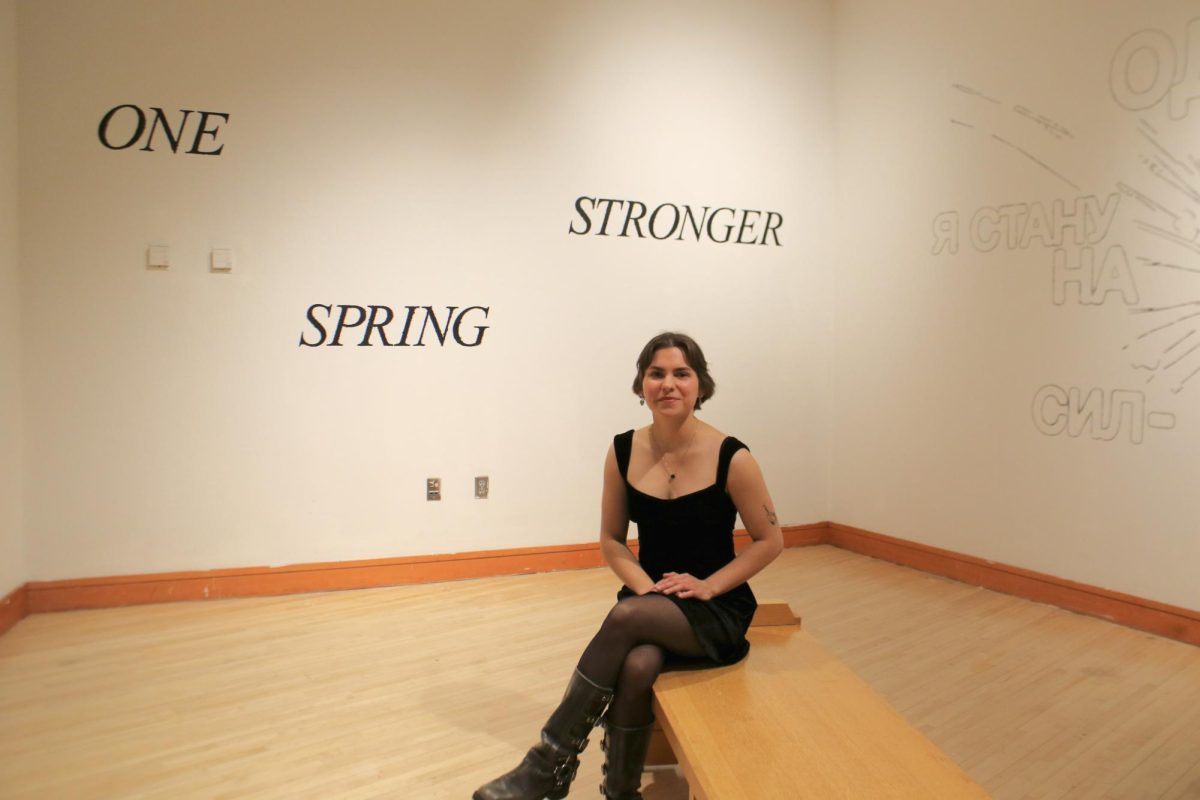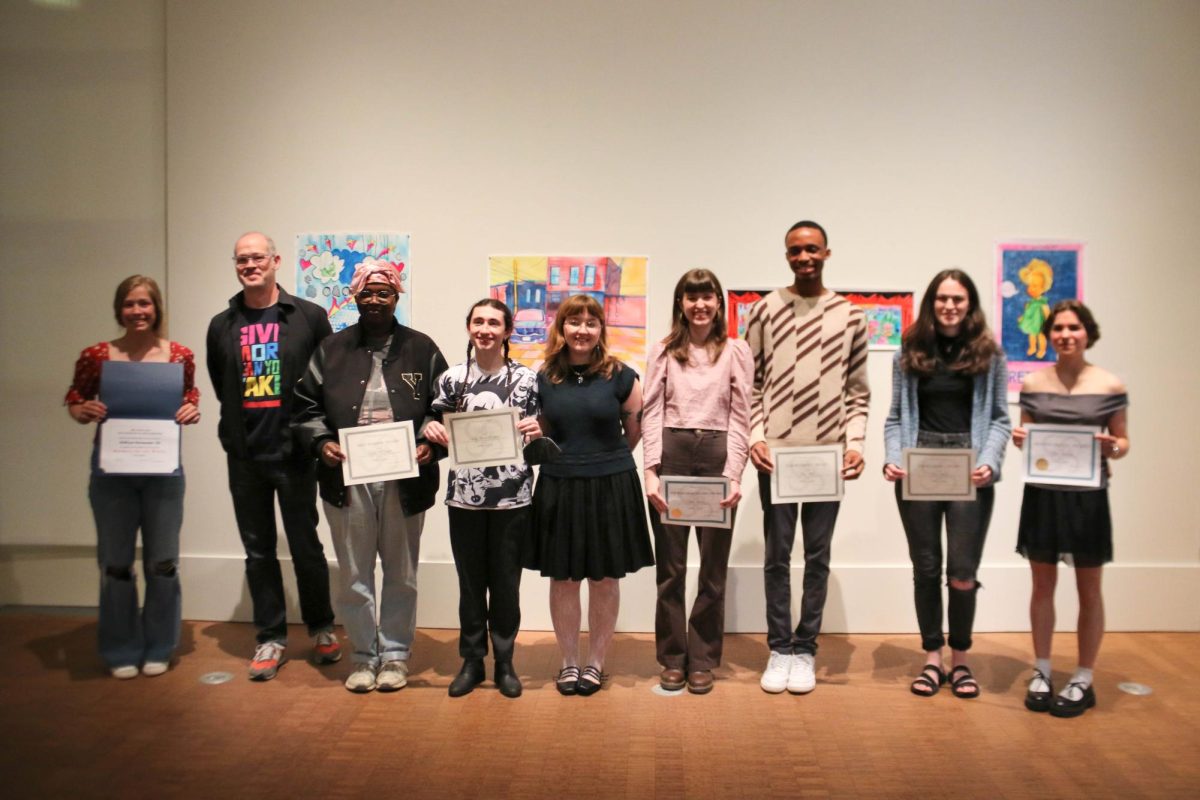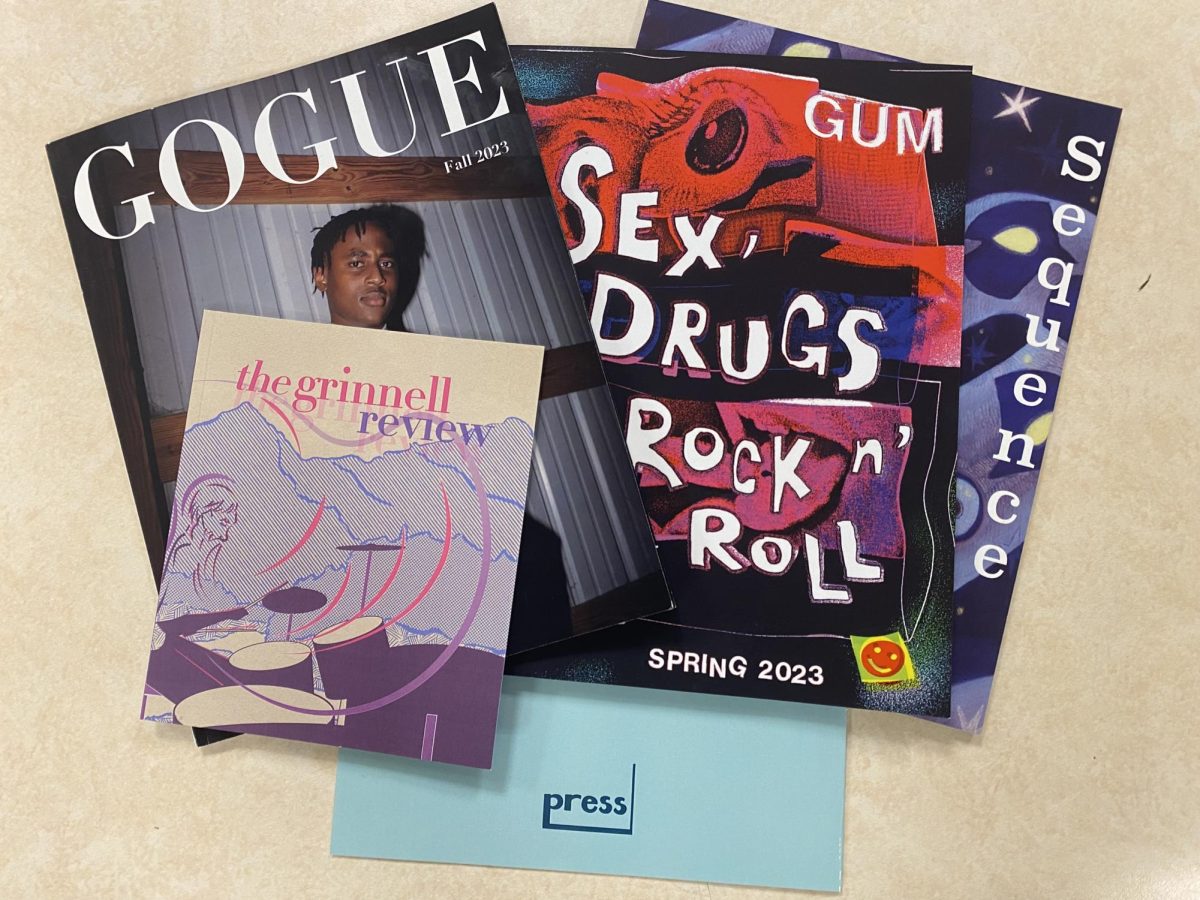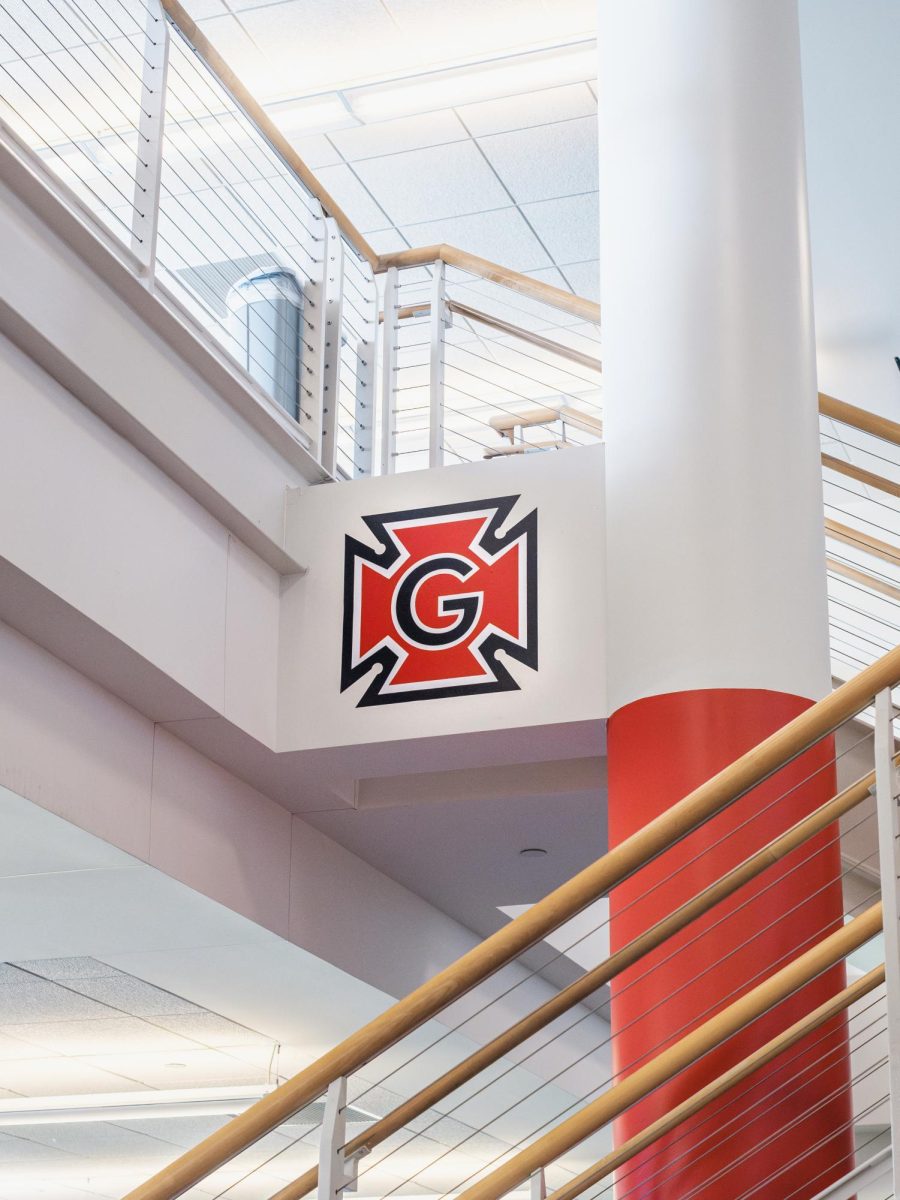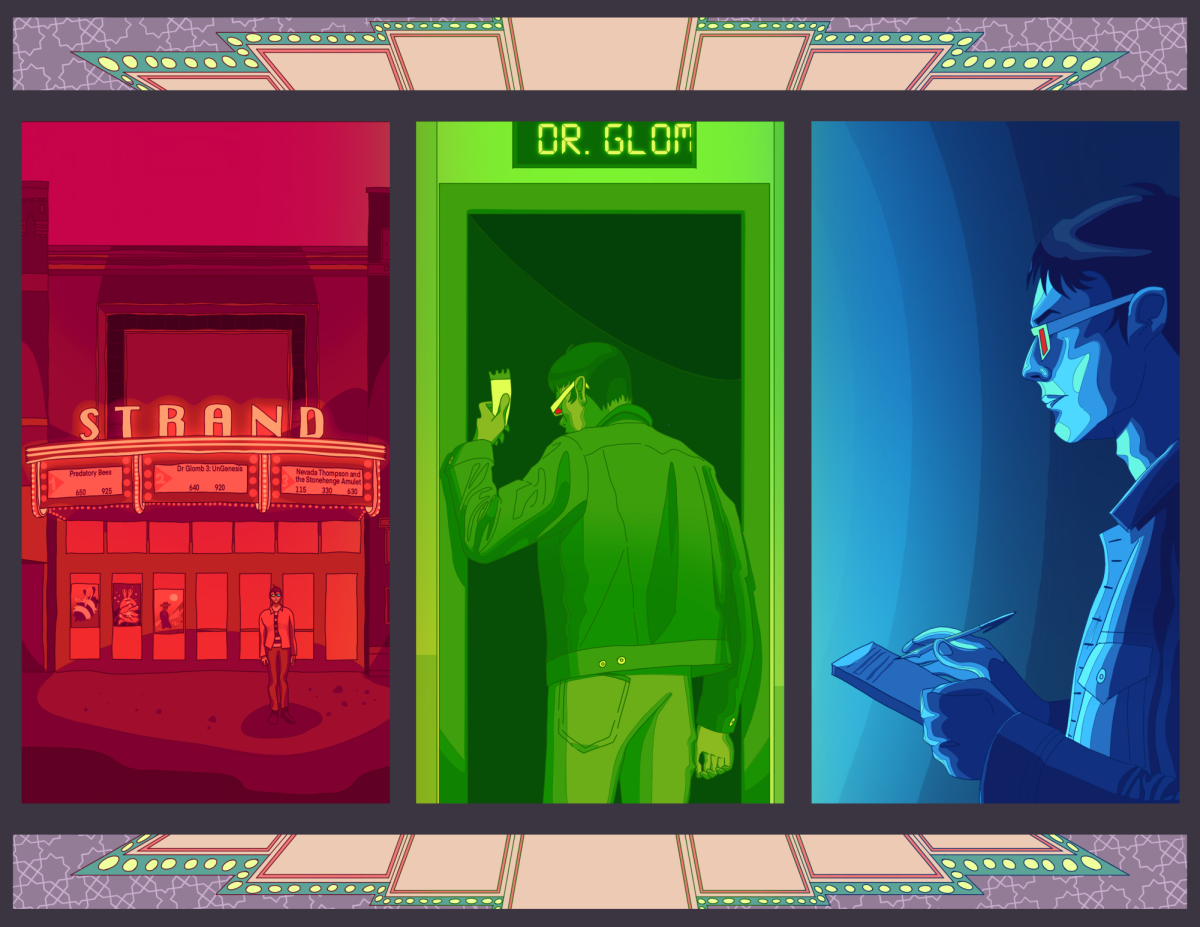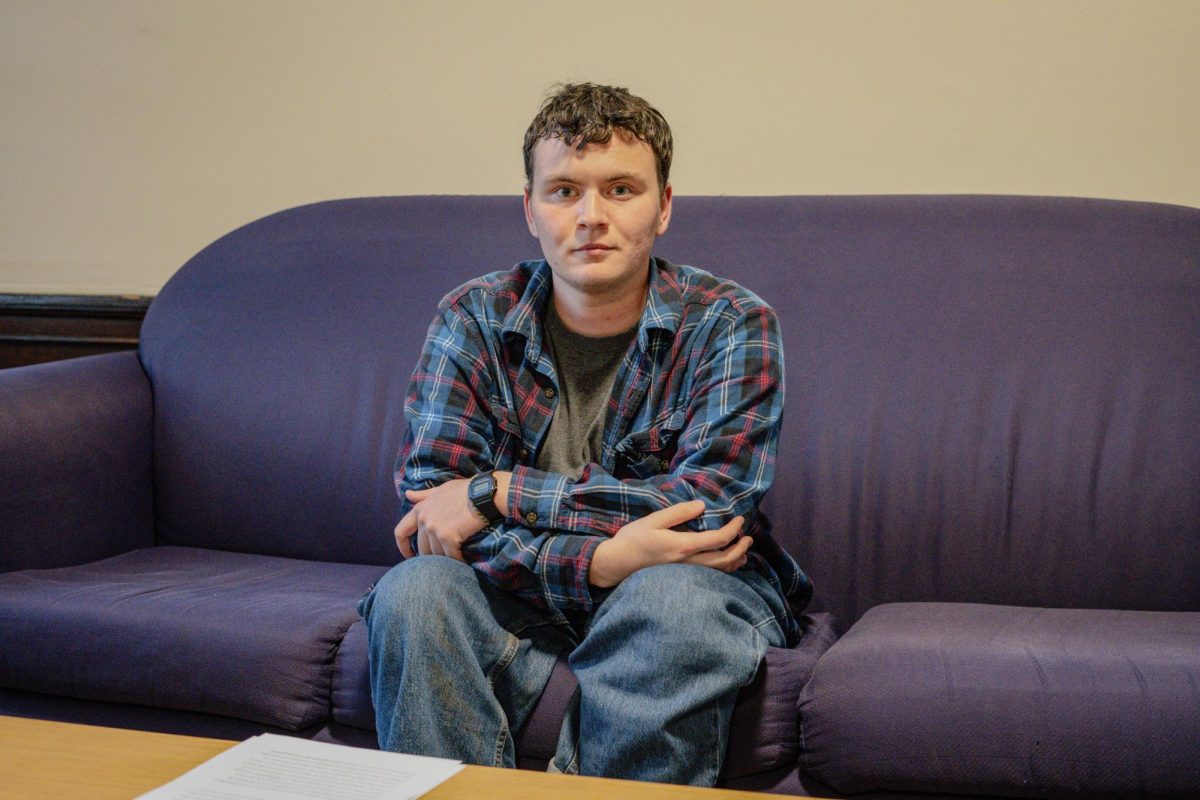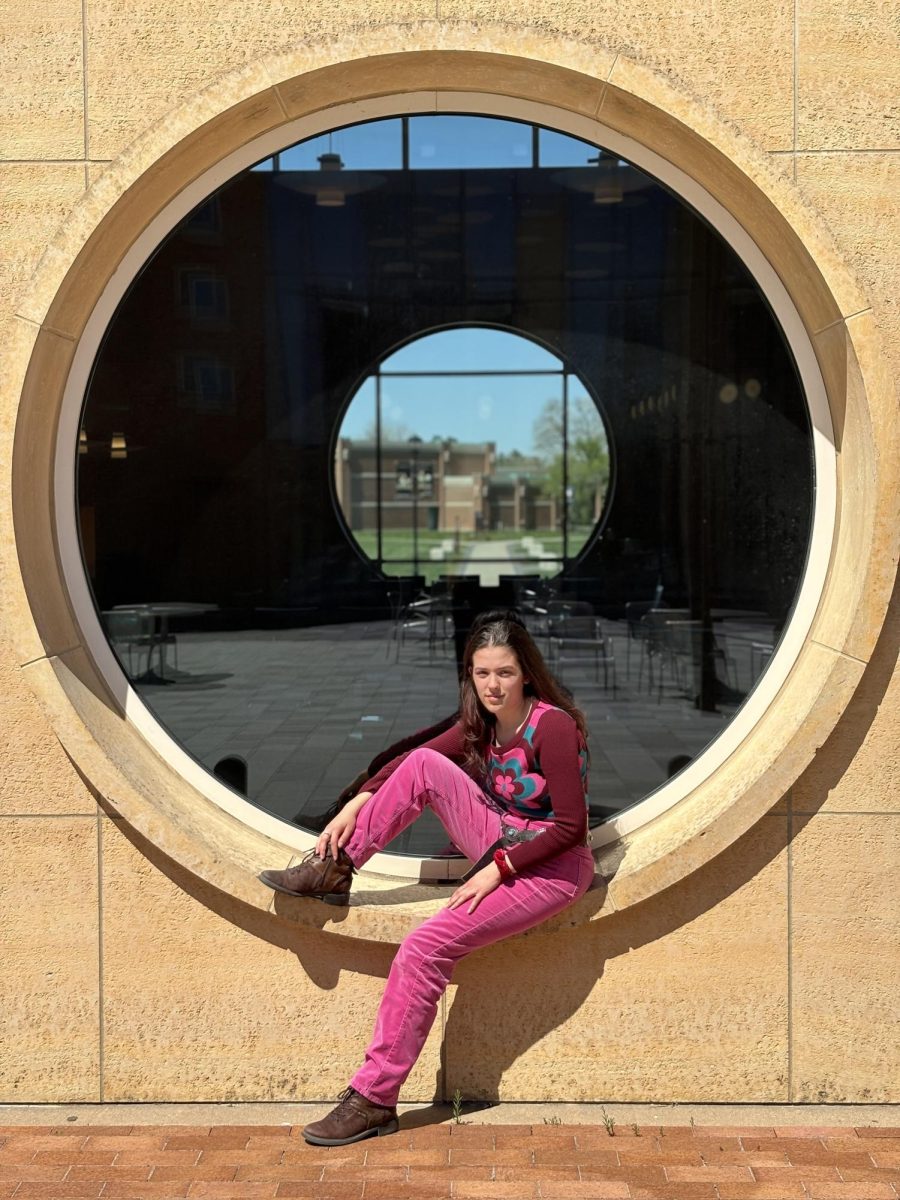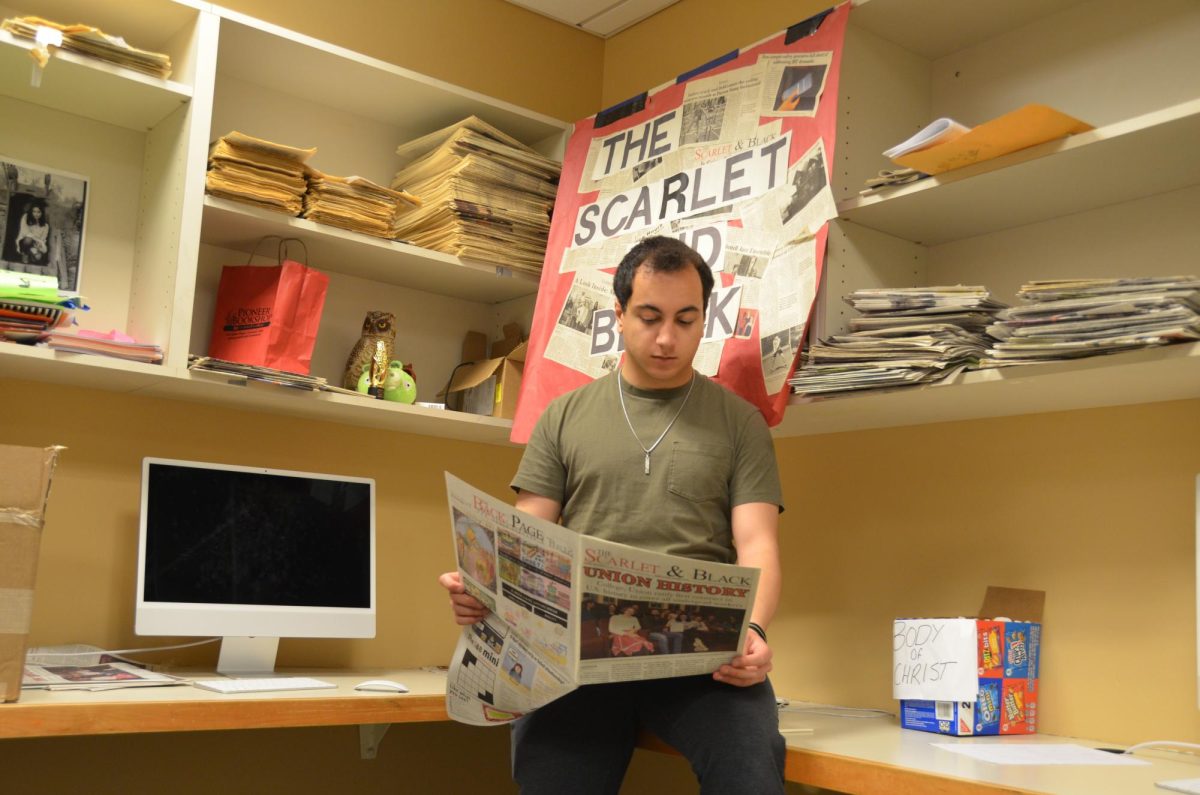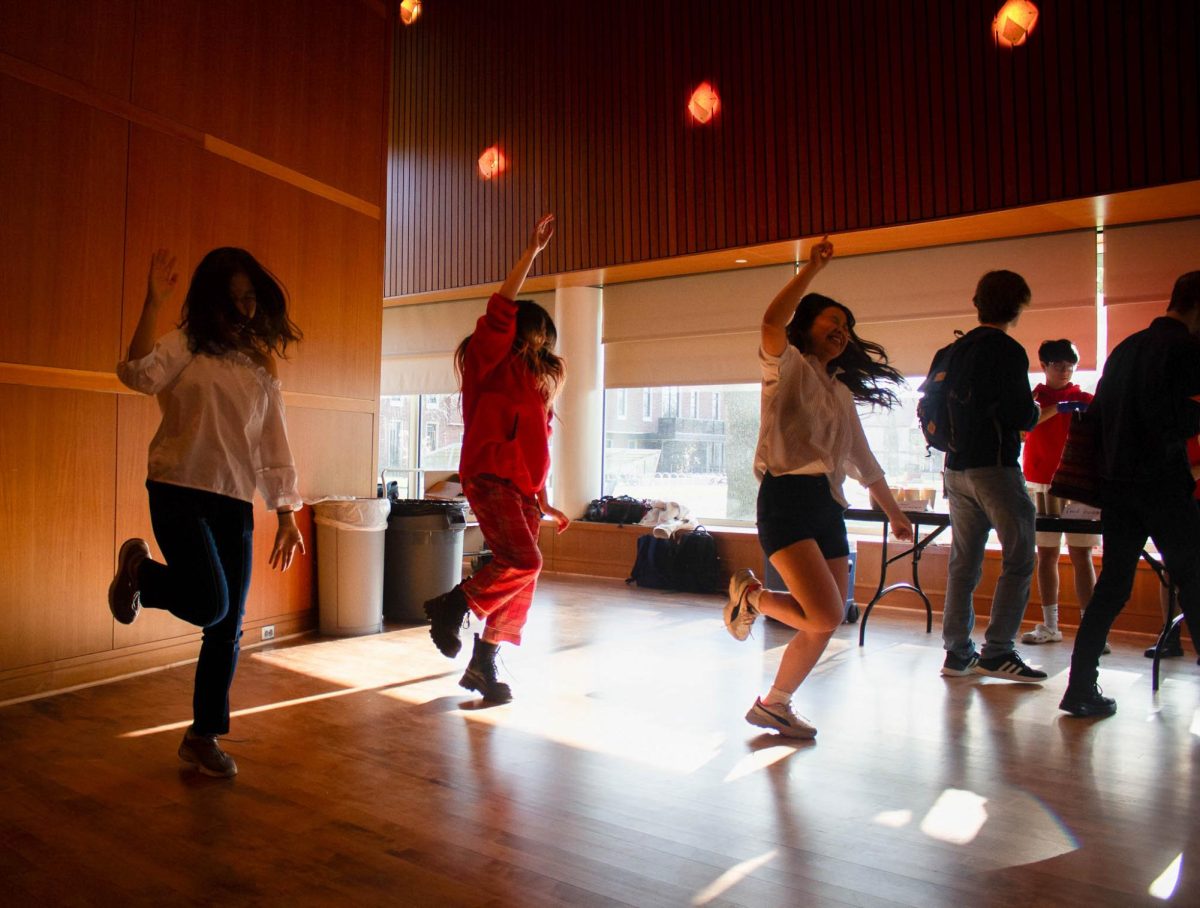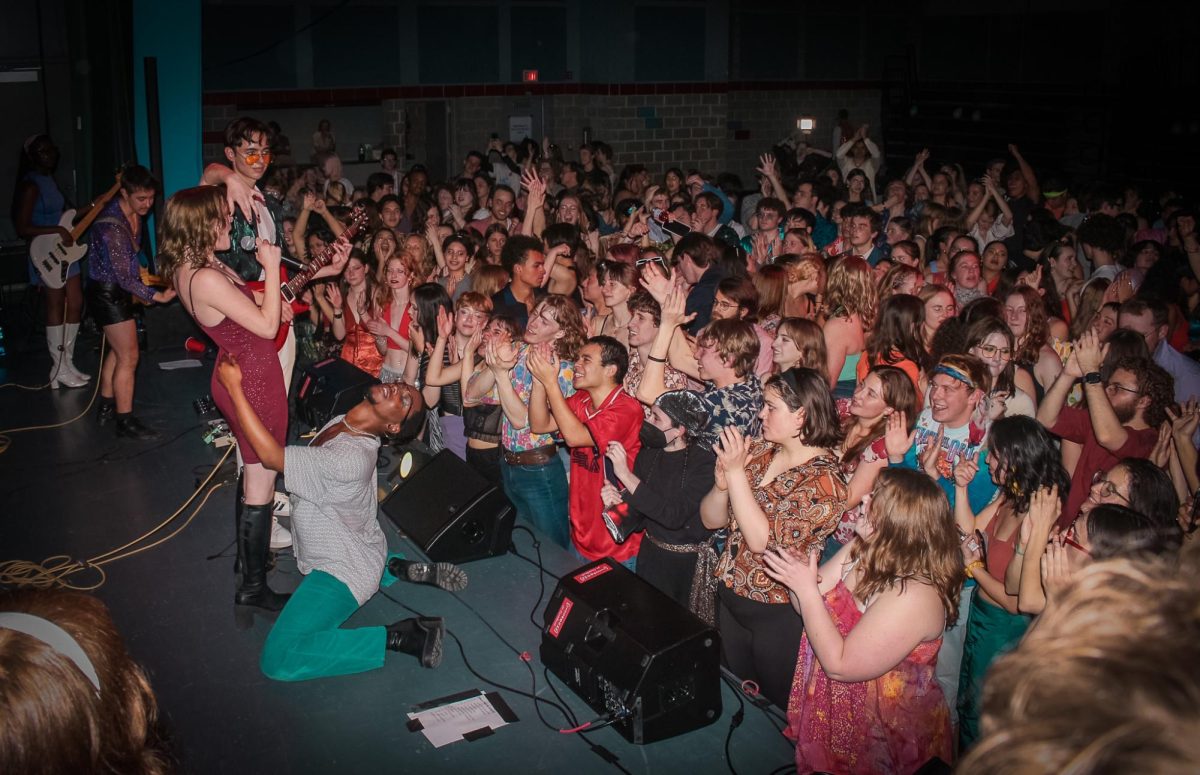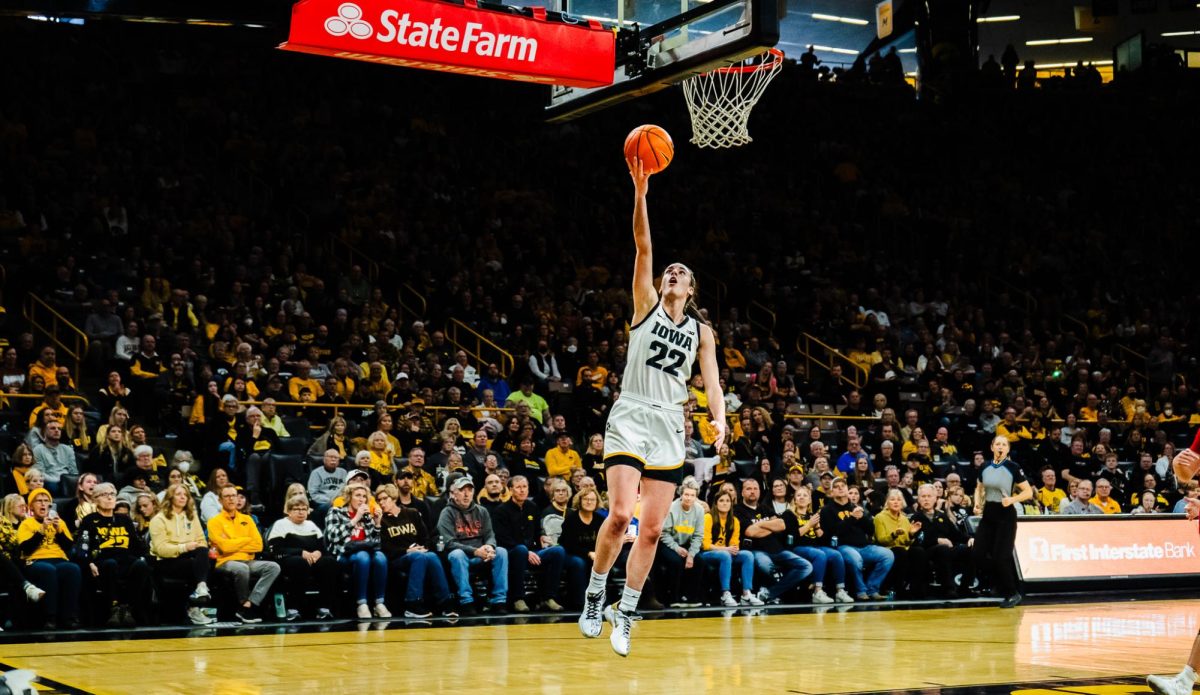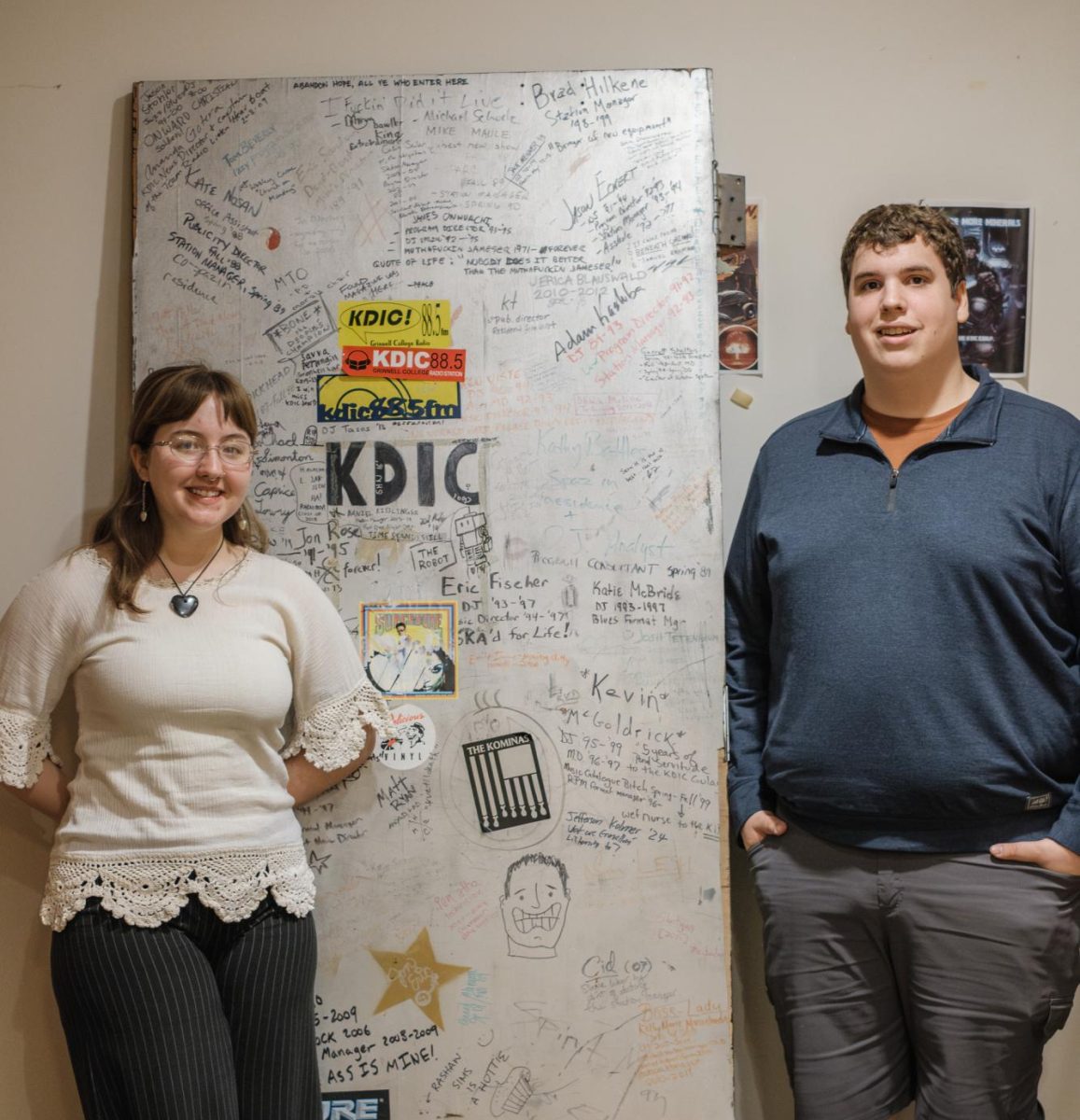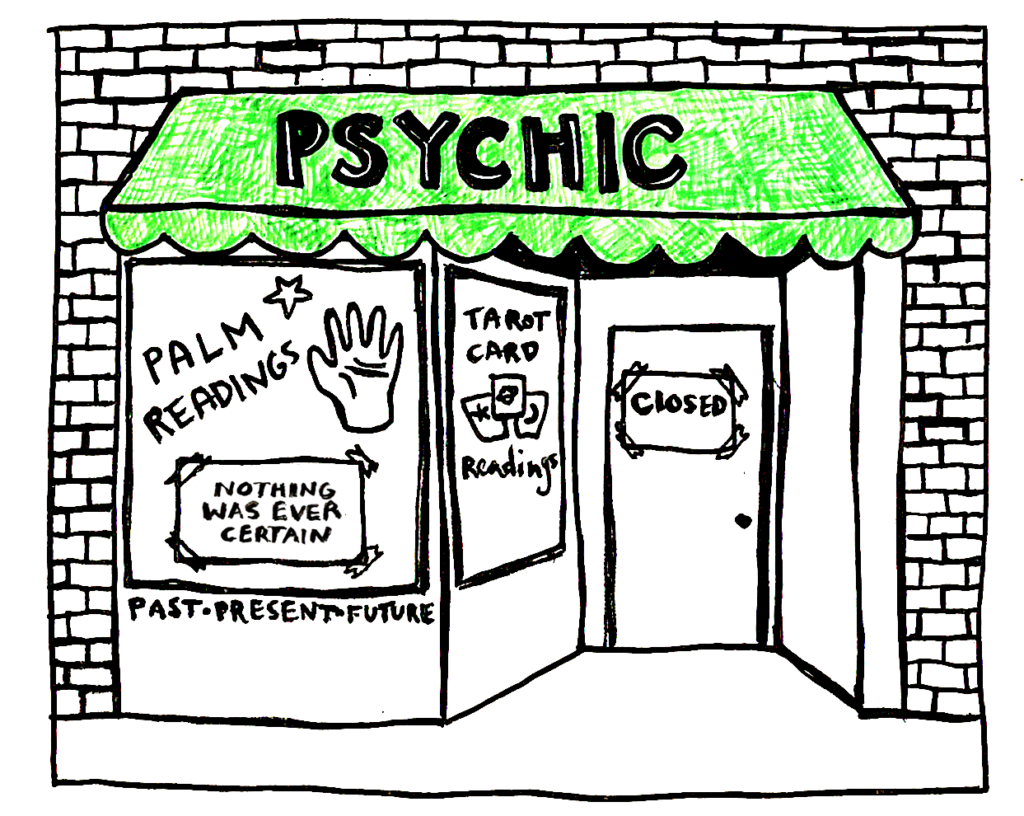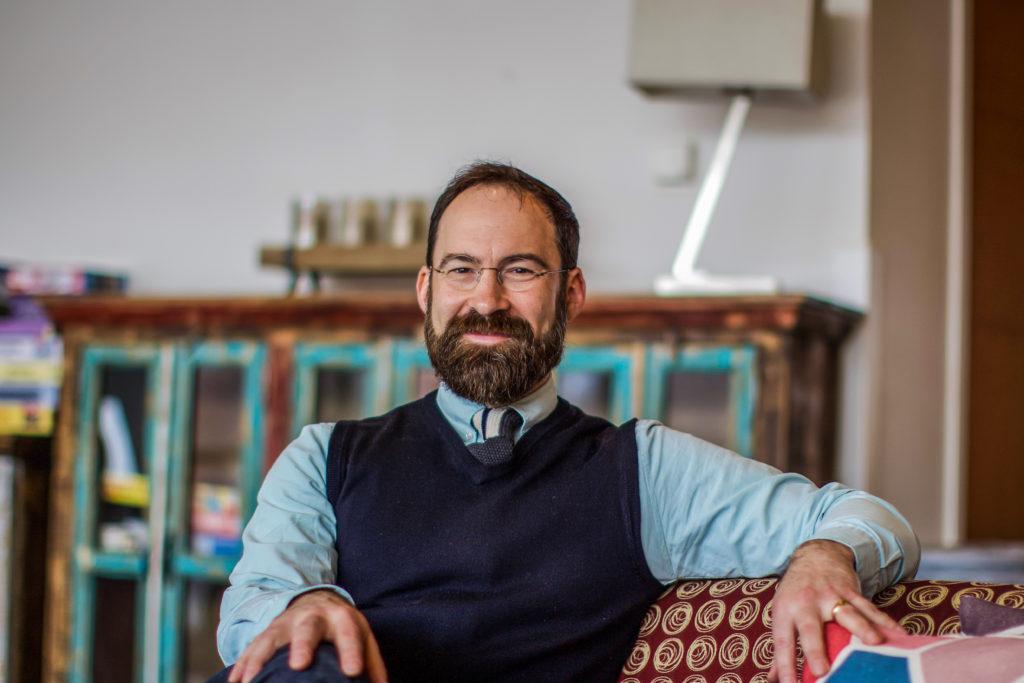By Siddharth Dhananjay
dhananja@grinnell.edu
Walking into Smith Gallery this week, you will enter more than an art exhibition. Dis(locations) by Christopher Squier ’13, S&B Arts Editor, is a visceral experience that questions memory and gets a colorful answer in return.
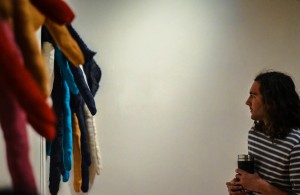
According to the official description of the exhibition, inscribed on the wall at Smith, “Dis(locations)…focuses on the idea that memory is not fixed, but rather constructed and reconstructed throughout our lives.”
Squier explained that the title of his work, Dis(locations), encompasses many aspects of the exhibit.
“The title comes from the idea of [my work] being rooted in my place of birth and also locating memory and locating thoughts that you experience while not being able to pin them down,” Squier said.
A wire mesh hangs in the center of the room, spanning the entire ceiling. Molded and twisted to represent some sort of a 3D landscape, it is suspended centimeters above the viewers’ heads.
With the wire grid, Squier invites us to the inner topology of his memories, only to plunge us into our own journeys of self-discovery within our subconscious through his wall sculptures. Interspersed randomly on the walls are bizarre sculptural forms with colorful tubes dangling from its sides. The sculpted forms—colored in aquamarine, Gryffindor red, burlap bronze, navy blue and seaweed green—provide the perfect visual stimuli that respond uniquely to every individual based on their own memories and experiences.
“It’s beautiful, it’s colorful! I love this topology landscape here. Reminds me very much of an energy landscape in biochemistry,” said Diana Bigelow, Squier’s mother, commenting on the topographic wire grid hanging from the wall.
Other viewers interpreted the installation differently.
“Those are definitely gang signs,” said Gigi Dichosa ’13, referring to the placement of the several tubes on the walls.
Dis(locations) is unique in the way it uses its space, creating a personal experience that forces you to acknowledge your surrounding and explore the art in an almost tactile sense.
“I think it’s really cool how the setting changes the space and forces people to adjust when they walk under [the mesh,] as opposed to a traditional gallery, where it’s just something on the walls. It’s very interactive,” said Kamila Berkalieva ’13.
A majority of the audience appreciated the way Squier utilized the space to create a three-dimensional experience that can rarely be seen at Smith.
“I’m happy to see people using the space more. Caleb [Neubauer ’13] and I talked about this in the summer, about how it seems like, a lot of times, shows in here end up just being stuff stuck on to the wall, so it’s cool to see this space used in a different way,” said Andy Delany ’13.
Squier’s work simultaneously exposes the ambiguity of memory while also indulging the audience in an appreciation of its beauty. He says that the memories he used as an inspiration for Dis(locations) were not specific events.
“I think place-based memories are more interesting to explore than specific events, because that’s where you can lose the details and explore the physical visual imagery,” Squier said.
Ultimately, Dis(locations)’s charm lies in its accessibility—its ability to include everybody in its fascination with memory.
Three year-old Penelope, daughter of Professor John Fennell, Philosophy, stumbled into the room, paused to assimilate the surreal landscape around her, turned to Squier and exclaimed, “Good Work!” In all its complexity, Dis(locations) manages to reach out even to little Penelope. “It smells like poison ivy,” she said.
Dis(locations) will run from October 11 through November 2nd in the Smith Gallery, in the JRC near the Dining Hall.
